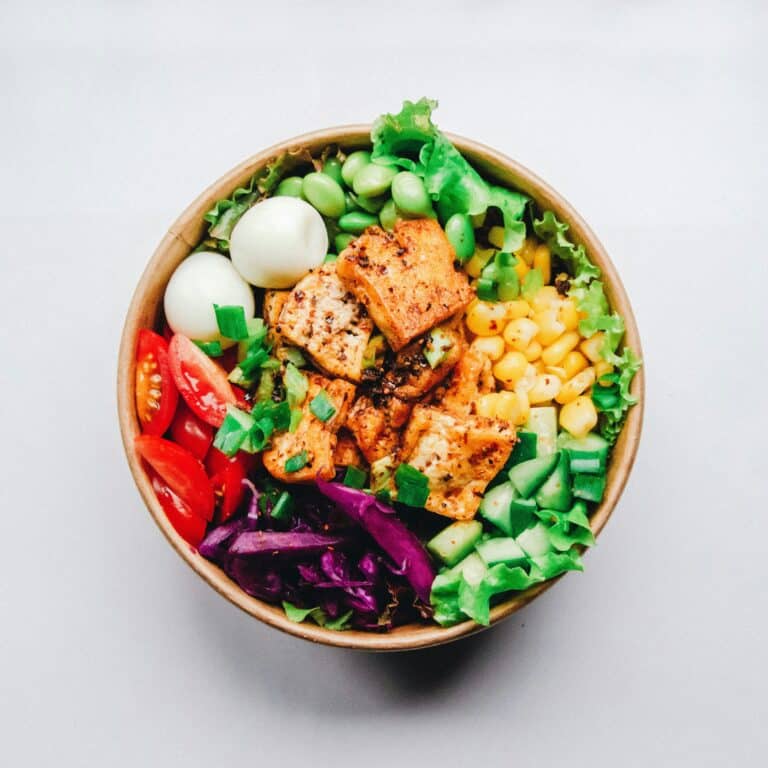From renewable energy to sustainable fashion, the green revolution is well and truly here. And in this evolution, one area that often slips under the radar, is our daily school lunches. Yes, you read that right! School lunches have a significant role to play in creating a sustainable future, and this article aims to shed light on the myriad ways in which we can automate and greenify this essential daily task. 🍏🌿

In a time where climate change and sustainability are no longer just buzzwords, but urgent global imperatives, it is crucial for us to scrutinize every aspect of our lives and assess its environmental impact. When it comes to school lunches, not only do we have the potential to contribute to a more sustainable planet, but we also have the opportunity to instill these values in our children, the next generation of earth guardians. ✨🌎
But what exactly do we mean by a ‘Green Lunch’?
Simply put, a green lunch is an eco-friendly meal that considers the environment in all its aspects – from the food that is served, the way it’s packaged, to the manner in which it is disposed of. It involves using fresh, locally sourced ingredients, minimizing waste, and employing reusable containers. In this article, we will discuss how technology can help us automate the process of creating green lunches, making it not just a sustainable choice, but also a convenient one.💡🌿
Before we delve into the exciting world of automation and green lunches, it’s important to acknowledge the elephant in the room – the notion that being environmentally conscious is a laborious, time-consuming task. But what if we told you that with the right technology and a bit of planning, creating a green lunch could be as easy as clicking a button? 🖱️🌍
Yes, automation is the key!
The world of automation is rapidly evolving, and it’s time to leverage its potential in our quest for sustainable living. From smart shopping apps that help you find local, organic produce, to meal planning software that reduces food waste by optimizing portions, automation can significantly streamline the process of creating a green lunch. In this article, we will take you through various technologies, tools, and tips that can help you automate your school lunch preparation process, making it not just greener but also easier and more efficient. 🚀🍽️
So, whether you’re a parent looking to instill sustainable habits in your children, an educator aiming to incorporate environmental awareness into your curriculum, or simply an eco-conscious individual trying to reduce your carbon footprint, this article is for you. Let’s embark on this exciting journey towards a greener, sustainable future, one lunchbox at a time. 🎒🌿
Are you ready to redefine the way you see school lunches?
Join us as we explore how automation can simplify the process of preparing eco-friendly lunches, making sustainability a convenient and accessible lifestyle choice, rather than a burdensome chore. We will provide practical, actionable advice, guiding you through the process step by step, and helping you make a positive impact on our planet. Because every small step towards sustainability is a giant leap for mankind. 🚶♀️🌍
So, are you ready to take that leap? Let’s get started! 🚀
Understanding the Importance of Sustainable School Lunches
Before we delve into the intricacies of automating school lunch ideas for a sustainable future, it is essential to understand the importance and impact of sustainable school lunches. Globally, we are witnessing an increased consciousness towards sustainability, with schools being no exception. Promoting sustainability within the school ecosystem is not limited to energy efficiency and waste reduction; it extends to the very heart of school life – the cafeteria.
Food waste is a significant contributor to global greenhouse gas emissions. A study by the Natural Resources Defense Council (NRDC) revealed that U.S. schools generate approximately 530,000 tons of food waste annually. By adopting sustainable practices in the preparation and consumption of school lunches, we can significantly reduce this environmental footprint.
Sustainable school lunches also have profound health implications. With the rising incidence of childhood obesity and related health issues, providing nutritious, fresh, and minimally processed meals can play a pivotal role in promoting healthy eating habits among children. Moreover, sustainable lunches incorporate locally sourced, seasonal foods, thus supporting local farming communities and the local economy.
Automating School Lunch Ideas for Sustainability
The concept of automating school lunch ideas for sustainability involves using technology and innovation to streamline the process of planning, preparing, and serving sustainable school lunches. This includes leveraging digital platforms for meal planning, using data-driven insights for inventory management, and adopting energy-efficient kitchen appliances.
For instance, schools can use software applications to plan and track meals, ensuring a balance of nutrition and variety, while minimizing waste. Tools like Nutrislice and PrimeroEdge offer features for menu planning, nutrient analysis, and allergy tracking, making it easier for schools to provide healthy, sustainable lunches. Furthermore, advanced inventory management systems can help schools optimize their food orders, reducing the likelihood of surplus and subsequent food waste.
Automation can also extend to the preparation and serving of meals. Energy-efficient, automated kitchen appliances can reduce energy consumption, while innovative serving solutions like the ‘grab-n-go’ concept can minimize waste from packaging. Check out the video ‘Sustainable School Lunch: How to Automate and What to Consider’ on the channel Sustainable School Lunch for a detailed overview of this topic.
Comparing School Lunch Automation Software
| Software | Features | Benefits |
|---|---|---|
| Nutrislice | Menu planning, Nutrient analysis, Allergy tracking | Enhanced meal planning, Reduced food waste, Improved student health |
| PrimeroEdge | Inventory management, Meal planning, Point of sale | Optimized food orders, Streamlined cafeteria operations, Accurate financial tracking |
Embracing Local and Seasonal Foods for Sustainable Lunches
When planning for sustainable school lunches, the emphasis should be on local and seasonal foods. These foods require less transportation and refrigeration, thereby reducing carbon emissions. Also, locally grown foods are usually fresher and more nutrient-dense than foods shipped from distant locations.
Seasonal foods are also more likely to be grown without the excessive use of artificial fertilizers and pesticides, making them a healthier choice for children. Furthermore, introducing children to local and seasonal foods can help them understand and appreciate their food sources, fostering a lifelong commitment to sustainable eating habits.
Incorporating local and seasonal foods into school lunches can be made easier with the help of technology. Schools can use digital platforms to connect with local farmers, purchase fresh produce, and even involve students in the process through interactive learning experiences. The video ‘The Impact of Local and Seasonal Foods on School Lunches’ by the channel Sustainable School Lunch offers valuable insights into this aspect of sustainable school lunches.
Reducing Food Waste Through Smarter Practices
Reducing food waste is an integral part of sustainable school lunches. This involves thoughtful meal planning, portion control, and educating students about the importance of minimizing waste. Technology can play a crucial role in this, providing data-driven insights to help schools track and reduce food waste.
Some schools have implemented software programs that allow students to ‘pre-order’ their lunch choices, enabling the kitchen staff to prepare the exact quantity of food required, thereby reducing waste. Leftover food can be composted or donated to local food banks, further contributing to sustainability efforts.
By adopting these smarter practices, schools can make a significant impact in promoting sustainability, while also educating students about responsible consumption. For more strategies on reducing food waste in schools, do watch the video ‘Food Waste: A Story of Excess’ by the channel Sustainable School Lunch.
Incorporating Sustainability Education into School Lunch Programs
Sustainable school lunch programs offer an excellent opportunity to educate students about sustainability. This can be done through interactive learning experiences, like school gardens, where students can learn about organic farming, composting, and the importance of local and seasonal foods.
Schools can also use digital platforms to provide students with information about the nutritional content and environmental impact of their lunch choices, fostering an awareness and appreciation for sustainable eating habits.
Ultimately, automating school lunch ideas for a sustainable future is about more than just providing nutritious, environmentally friendly meals. It’s about shaping the next generation’s attitudes towards food, health, and sustainability. And with the help of technology, we can make this process more efficient, engaging, and impactful.
Conclusion
Concluding Thoughts
Throughout this insightful article, we delved into the heart of a wide range of complex technical topics, unraveled layers of intricate concepts, and walked through the labyrinth of technical details in an effort to bring clarity and understanding.
🧠💡
To recap, we kicked off our discussion with an exploration of the foundational aspects of Information Technology (IT) and engineering principles, underlining their profound relevance in our world today. We discussed in detail, key aspects like the evolution of IT infrastructure, the growth of software engineering, as well as the advancements in AI and machine learning, painting a vivid picture of their potential impact on various sectors.
We further explored the link between these technical aspects and the current trends in the industry, focusing on how they are shaping our present and future. 💼💻
As we navigated through the intersections of these topics, we discovered how these technologies are transforming industries, from healthcare and finance to education and entertainment, and the tremendous opportunities that lie therein. 🌐🚀
The information presented in this article is based on thorough research and careful analysis. However, as the landscape of technology continues to evolve rapidly, it’s crucial to stay updated. Always remember that knowledge is power, and continual learning is the key to staying ahead in this rapidly evolving world.
I implore you, dear reader, to not just consume this information passively, but to reflect on it, to question it, and to apply it in your unique context. As the famous saying goes, “Knowledge is of no value unless you put it into practice.” 💭📚
In conclusion, we’ve come to realize that IT and engineering are not just technical jargons meant for the tech-savvy, but they form the backbone of our modern society. The more we understand and harness these technologies, the more we can innovate and create a brighter future.
I hope this article has succeeded in demystifying these complex topics and has sparked a flame of curiosity within you. Let’s continue to explore, learn, and grow together in this exciting journey of technological advancement.
Please, feel free to share your thoughts in the comments section below. You can also share this article with your network to help spread the knowledge. Let’s keep the conversation going. 🗣️👥
Remember, we rise by lifting others. So, let’s continue to empower each other through the sharing of knowledge.
Thank you for reading. Looking forward to your feedback and engagement.
References and Further Reading
Until our next exploration, stay curious and keep learning.👋🎓



